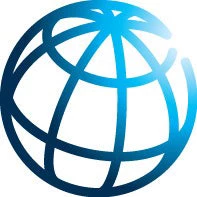Aid plays a vital role in reducing poverty and inequality, increasing growth, building capacity, and accelerating achievement of the Millennium Development Goals set by the international community. The World Development Indicators 2010, one of the Bank’s flagship publications on development, found that lending increased in Latin America and the Caribbean, but promised aid by donor’s had fallen short in Sub-Saharan Africa.
In response to the financial crisis, IBRD lending rose to $21.5 billion in 2008. The largest increase was in Latin America, where new loans reached $9.4 billion. The largest borrowers -- representing half the inflows -- were Brazil, Mexico and Colombia.

Official bilateral lenders responded to the turmoil in global financial markets by increasing access to US dollar liquidity. The US Federal Reserve swap facilities with the central banks of Brazil and Mexico provided these countries with short term financing. On October 29, 2008, Banco de México established a temporary currency arrangement (swap line) with the US Federal Reserve for up to 30 billion US dollars, initially effective until April 30, 2009
In 2005 the leaders of the Group of Eight industrialized countries meeting in Gleneagles, Scotland, made specific commitments to increase aid flows to Africa. They promised to increase annual aid flows to all of Africa by $25 billion (in 2004 dollars), which would double aid flows by 2010.
Sub-Saharan Africa receives about 90 percent of aid to all of Africa. Net aid flows to Sub-Saharan Africa increased between 2005 and 2006 from $38 billion to $46 billion (in 2008 dollars), largely due to one-time debt relief under the Heavily Indebted Poor Countries (HIPC) and the Multilateral Debt Relief (MDRI) initiatives. The amount received fell sharply in 2007 to $36 billion in 2007 and rose to $39 billion in 2008. The preliminary estimate for 2009 net aid flows to Sub-Saharan Africa is about $39 billion, still well below the Gleneagles commitments.
Based on donor commitments for 2010, all of Africa is likely to receive only about $11 billion of the $25 billion increase promised at Gleneagles.

Related links:


Join the Conversation